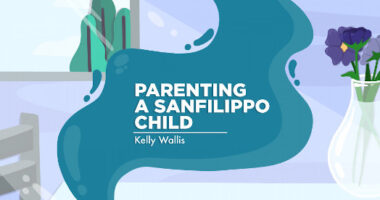My Daughter Has a Terminal Illness. Now What?

My daughter Abby was diagnosed with Sanfilippo syndrome almost two years ago. It took a while to live with the shock of the diagnosis. Not long before she was diagnosed, I received the news that I had cancer, so my family was already in “adaptation” mode.
We had shifted to our “new normal,” which included many things along the way, including radiation, chemo, surgeries, and metastasizing cancer. Cancer couldn’t let go of my body — it returned over and over. As of right now, I am cancer-free, but honestly, I am not totally convinced.
Some chronic illness patients say that after they are diagnosed, they appreciate life more. They live for each moment. While I certainly appreciate the little things — especially with Abby — it is hard for me to be appreciative of life after both my daughter and I have been dealt such harsh blows. That is just brutal honesty.
So now what? With all these labels floating around the house, how do we live among them? For me, I choose not to live in the “cancer bubble.” It is not all-encompassing; rather, it is a part of me (hopefully in the past tense), but it does not consume me. Abby’s Sanfilippo diagnosis far outweighs my health issues.
I feel it is necessary to detail Abby’s experience with Sanfilippo syndrome at this point. This disease has been referred to as “childhood Alzheimer’s,” an incredibly accurate description. It progresses at different rates and uniquely affects each child. The most common symptoms include diarrhea, sleep problems, hyperactivity, seizures, and behavioral and speech problems. The Cure Sanfilippo Foundation offers a great description of the disease and a comparison of a neurotypical child to a Sanfilippo child.
For Abby, this disease has caused her vocabulary to decrease significantly. Her ability to understand what she is told (receptive language) is greater than her ability to say what she wants (expressive language), when it had always been the opposite before diagnosis.
Two home videos demonstrate this contrast. The first video shows Abby at age 4. The second video shows her at 23. She has extremely poor motor planning, which involves the neurological requirements to execute various motor functions. She paces up and down the hall of our house constantly and is now in diapers. She has had a few episodes that appear to us to be small seizures.
Her interest in things she used to enjoy has disappeared. As time passes, Abby becomes a shell of her former self, and it is so painful to watch.
As a music therapist, I know what music can do for Alzheimer’s patients, so we incorporate tons of music into Abby’s life. It can bring her back to us: She laughs, actually sings some, and is happy. She receives music therapy from a colleague of mine, and it brings her joy.
At this point, our family only wants Abby to enjoy herself. The two things we want for Abby are to be happy and pain-free. We must be satisfied with that, because it is all that is left. No one knows when God will call her to her heavenly home, and she will have her own glorious new normal.
Meanwhile, our new normal is not glamorous or overly exciting, but it is ours. It is our sacred space where we can show Abby that she is truly and unconditionally loved.
To follow Abby, please visit the Facebook page we created to post updates about her.
***
Note: Sanfilippo News is strictly a news and information website about the disease. It does not provide medical advice, diagnosis, or treatment. This content is not intended to be a substitute for professional medical advice, diagnosis, or treatment. Always seek the advice of your physician or other qualified health provider with any questions you may have regarding a medical condition. Never disregard professional medical advice or delay in seeking it because of something you have read on this website. The opinions expressed in this column are not those of Sanfilippo News or its parent company, Bionews Services, and are intended to spark discussion about issues pertaining to Sanfilippo syndrome.







Leave a comment
Fill in the required fields to post. Your email address will not be published.